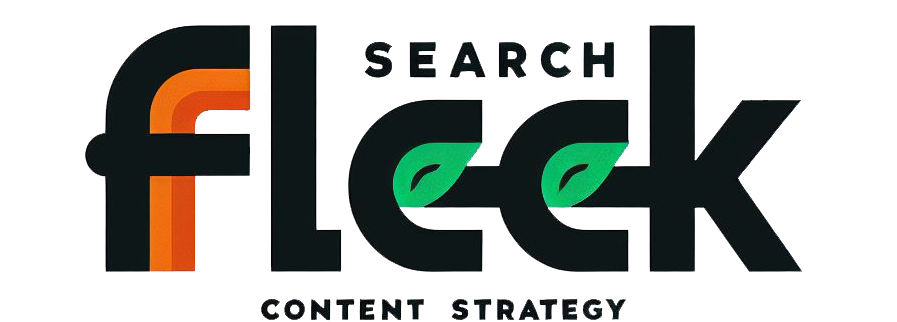The world of physical therapy is all about empowering people to move, heal, and live life to the fullest. But in a competitive field, how do you attract patients seeking your expert guidance? A captivating blog can be your secret weapon.
Here are 59 diverse blog post ideas to spark your creativity and ignite your journey as a successful physical therapist who connects with patients and builds a thriving practice.
59 Physical Therapy Blog Topic Ideas
Showcasing Your Expertise:
- Physical Therapy 101: A Guide for Understanding How PT Works
- The Benefits of Physical Therapy: Regaining Strength, Mobility, and Independence
- Common Physical Therapy Conditions: Addressing Pain and Restoring Function
- Physical Therapy vs. Chiropractic Care: Understanding the Differences
- A Day in the Life of a Physical Therapist: Behind the Scenes
- Patient Spotlight: Inspiring Stories of Recovery and Success
- The Importance of Physical Therapy After Surgery
- Physical Therapy for Athletes: Preventing Injuries and Enhancing Performance
- Physical Therapy for Seniors: Maintaining Mobility and Independence
- The Science Behind Physical Therapy: Understanding Treatments and Techniques
Helping Patients Understand Treatment:
- What to Expect During Your First Physical Therapy Appointment
- Understanding Your Physical Therapy Treatment Plan: Goals and Exercises
- Common Physical Therapy Techniques Explained: Manual Therapy, Stretching, and More
- Physical Therapy Exercises You Can Do at Home: Maintaining Progress Between Sessions
- The Importance of Pain Management in Physical Therapy
- Nutrition and Physical Therapy: Fueling Your Recovery
- Staying Motivated During Physical Therapy: Tips for Success
- Physical Therapy and Mental Health: The Connection Between Body and Mind
- The Importance of Rest and Recovery in Physical Therapy
- Physical Therapy Myths Debunked: Separating Fact from Fiction
Content for Specific Conditions:
- Physical Therapy for Back Pain: Finding Relief and Preventing Recurrence
- Physical Therapy for Knee Pain: Restoring Mobility and Strength
- Physical Therapy for Neck Pain: Easing Tension and Improving Posture
- Physical Therapy for Shoulder Pain: Regaining Range of Motion
- Physical Therapy for Sports Injuries: Returning to Activity Safely
- Physical Therapy for Arthritis Management: Reducing Pain and Improving Function
- Physical Therapy for Balance and Gait Disorders
- Physical Therapy for Work-Related Injuries: Getting You Back on the Job
- Physical Therapy for Pre and Postnatal Care: Supporting Mothers Throughout Pregnancy
- Physical Therapy for Children: Addressing Developmental Delays and Promoting Healthy Growth
Marketing and Patient Attraction:
- Building a Strong Online Presence as a Physical Therapist
- Crafting a Compelling Physical Therapy Website: Attracting New Patients
- The Power of SEO for Physical Therapists: Getting Found Online
- Social Media Marketing for Physical Therapists: Engaging with Potential Patients
- Networking for Success: Building Relationships with Doctors and Other Healthcare Providers
- Developing a Patient Referral Program: Encouraging New Patients
- Creating Irresistible Content for Your Physical Therapy Blog
- Building Trust with Potential Patients: The Importance of Patient Reviews and Testimonials
- The Benefits of In-Clinic Physical Therapy vs. Telehealth Options
- Offering Free Consultations or Screenings: Attracting New Patients and Addressing Concerns
- Partnering with Local Gyms and Fitness Centers: Expanding Your Reach
- Community Outreach for Physical Therapists: Raising Awareness and Building Relationships
Building Your Physical Therapy Practice:
- The Financial Side of Physical Therapy: Running a Successful Practice
- Hiring and Managing Staff in a Physical Therapy Practice
- Creating a Positive Patient Experience in Physical Therapy
- The Importance of Continuing Education for Physical Therapists
- Staying Up-to-Date with the Latest Physical Therapy Techniques
- Work-Life Balance for Physical Therapists: Avoiding Burnout
- Physical Therapy Equipment Essentials for Your Practice
- The Future of Physical Therapy: Emerging Technologies and Trends
Engaging Your Audience:
- Physical Therapy Q&A: Addressing Common Patient Concerns
- Physical Therapy Success Stories: Inspiring Others on Their Recovery Journey
- Ask the PT: Encouraging Patient Engagement Through Interactive Content
- Physical Therapy Exercises You Can Do at Work: Maintaining Wellness Throughout the Day
- Healthy Habits for Injury Prevention: Tips for Staying Active and Pain-Free
- The Importance of Physical Fitness: Building Strength and Stamina
- Ergonomics for a Healthy Workstation: Preventing Work-Related Pain
- Physical Therapy Resources: Sharing Valuable Information with Patients
- Physical Therapy Podcasts You Should Be Listening To: Staying Informed
Building a Thriving Physical Therapy Practice: Beyond the Blog
This list offers just a starting point! Remember to tailor your content to your specific area of expertise and the types of patients you serve. Here are some additional tips for crafting captivating physical therapy blog content:
- High-Quality Visuals: Visuals are powerful! Include images, infographics, and even short videos to enhance your blog posts and make them more engaging for readers.
- Patient-Centric Content: Focus on creating content that is informative, helpful, and addresses the specific needs and concerns of your target audience.
- Authentic Voice: Share your passion for physical therapy and your expertise in a way that is genuine and relatable.
- SEO Optimization: Research relevant keywords in the physical therapy niche. Integrate keywords naturally throughout your content to improve search engine ranking and ensure your blog gets discovered.
- Content Consistency: Maintaining a regular posting schedule is crucial. Aim for weekly, bi-weekly, or monthly content to keep your audience engaged and coming back for more.
FAQs: Starting a Successful Physical Therapy Blog
A: Consistency is key! Aim for a regular schedule (weekly, bi-weekly, or monthly) to keep your audience engaged.
A: Utilize keyword research tools like Google Keyword Planner or SEMrush. Focus on terms related to “physical therapy near me,” “common physical therapy conditions,” “physical therapy exercises,” and specific conditions you treat.
A: Social media is a powerful tool! Share blog posts on platforms like Facebook, Instagram, and LinkedIn groups relevant to health and wellness. Additionally, consider guest blogging on other websites or online publications in the physical therapy industry.
Conclusion
In the world of physical therapy, your mission is to empower patients to reach their full potential. A captivating blog can be your secret weapon for attracting new patients, showcasing your expertise, and establishing yourself as a trusted partner in their journey to recovery and well-being.
With these 59 diverse blog post ideas and helpful content creation tips, you can embark on a journey of building a thriving practice and making a positive impact on the lives of your patients. Remember, educate, inspire, and empower – and watch your physical therapy practice flourish!
Emon Anam, CEO of Search Fleek, isn't your typical digital guru. He brings a unique blend of financial expertise (former banking pro!) and digital marketing mastery to the table. A self-proclaimed "SEO Sherlock Holmes," Emon unlocks content secrets for local businesses and SaaS companies. But beyond the keyboard, he's a devoted family man, music enthusiast, and cricket champion. Let Emon weave your digital success story!




